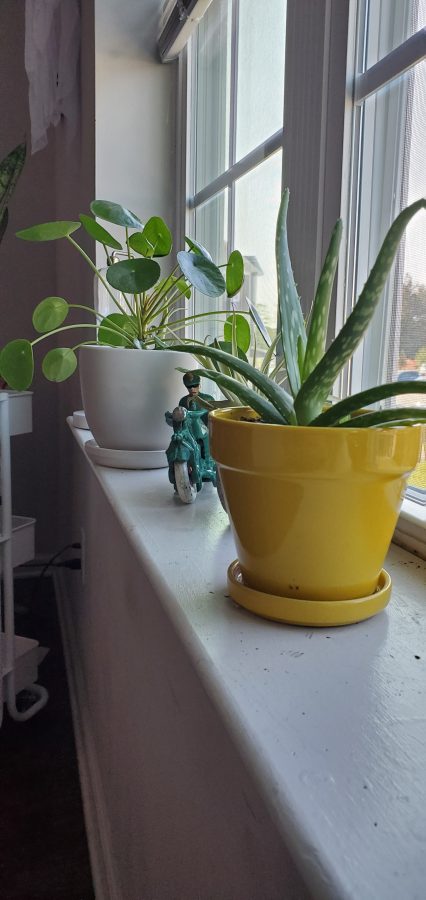With spring right around the corner, students may want to pick up some plants and flowers to liven up their dorm room.
In 2017, NASA released a report that stated that keeping houseplants can help remove 87 percent of toxins in just 24 hours. Not only that, but a 2009 study led by psychologist Netta Weinstein found that plants, both in nature and in your apartment, could produce psychological benefits, reduce stress and improve concentration. So not only could you decorate your dorm or apartment to look like the bedroom from Urban Outfitters, but there are many physiological and physical benefits to look forward to when you become a plant parent.
In such a small (and sometimes cluttered) space, however, it can be hard to have your plants thrive. Margaret Forrest, a senior sustainable agriculture major with a brewing minor at the University of New Hampshire (UNH), has some sassy recommendations to spice up your windowsill.
Forrest has always grown up around plants, first at her mother’s home and garden shop and her family’s flower garden. She then started learning independently about houseplants from YouTubers such as Planterina.
“I’ve always loved how happy house plants make people,” Forrest said. “It’s honestly the perfect addition to your house or dorm.”
First up, Forrest’s go-to is the snake plant.
“She is an easy girl. She is someone you can bring home to your mom and she would love her,” Forrest said.
She explained that snake plants are succulent-like and love low light, allowing owners to forget about it for two weeks or “until your milk expires.” It doesn’t need direct light, and you can put it in a corner without worrying. This allows for more flexibility when debating where it would look perfect in the dorm or apartment.
Next up to bat is pilea peperomioides, also called the pancake plant or UFO plant. It has big circular leaves and long stems. According to Forrest, this needs to be watered at least twice a week and needs full to medium sunlight.
“All of its little leaves look like it’s waving to me every morning,” Forrest said, “and I wave back. That’s how I start my day.”
Oh boya, it’s time for hoya. The most common type is Hoya carnosa, which generally likes medium sun – nothing too bright. They are epiphytes, meaning that they grow on bark, and they only need to be watered once a week. They can be a few feet away from the window, so they can float around the area while still leaving room for other plants that may need full sunlight. Other varieties include Hoya kerrii, australis, and pubicalyx.
Air plants, not to be confused with Air Jordans, are also epiphytes.
“They look like tumbleweeds,” Forrest said, “but green.”
Since they don’t need soil they are easy to take care of. About once a week, according to Forrest, you soak the entire plant in water for about 15 minutes and then you can leave it alone. Air plants, hence their name, take moisture and nutrition from the air. They need full to medium sun and “a gentle kiss.”
Along with big box stores like Walmart or Home Depot, there are local New Hampshire greenhouses and nurseries around the Seacoast for students to choose from. Blue Bell Greenhouse and Pawtuckaway Nursery Corporation, located in Lee, or Northern Nurseries Inc., located in Barrington, are all less than five miles away from campus, and Wentworth Greenhouses is located in Rollinsford.




















